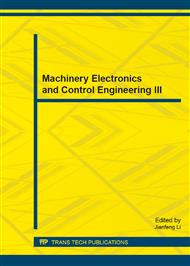p.590
p.594
p.598
p.602
p.607
p.611
p.615
p.619
p.623
Analysis of Positioning Accuracy Based on Focused Beam Forming
Abstract:
The technology of focused beam forming is mainly used for solving some certain problems about high-precision passive positioning in near field. In view of the problem of positioning accuracy, this paper discusses the effects of factors on the width of focused peak and its changes with the factors. The result of study shows the longer arrays length and the higher frequency band of signal and the shorter distance to the target, the narrower width of focused peak, which means the higher the positioning accuracy. The influence of the errors on the positioning accuracy is also simulated and analyzed in this paper. It turned out that, when horizontal linear array is used in the positioning, the horizontal error from the placement of array and parts of array elements no working have little effect on the positioning accuracy for the reason of the horizontal directivity of the array. The vertical errors from the placement of array, from the measurement of depth of the sea and the sound velocity impact the positioning accuracy a bit more. With the analysis of positioning accuracy, it proves that the technology of focused beam forming can realize high-precision positioning in near field. Finally, several suggestions on improving the positioning quality are offered.
Info:
Periodical:
Pages:
607-610
Citation:
Online since:
December 2013
Authors:
Price:
Сopyright:
© 2014 Trans Tech Publications Ltd. All Rights Reserved
Share:
Citation:


